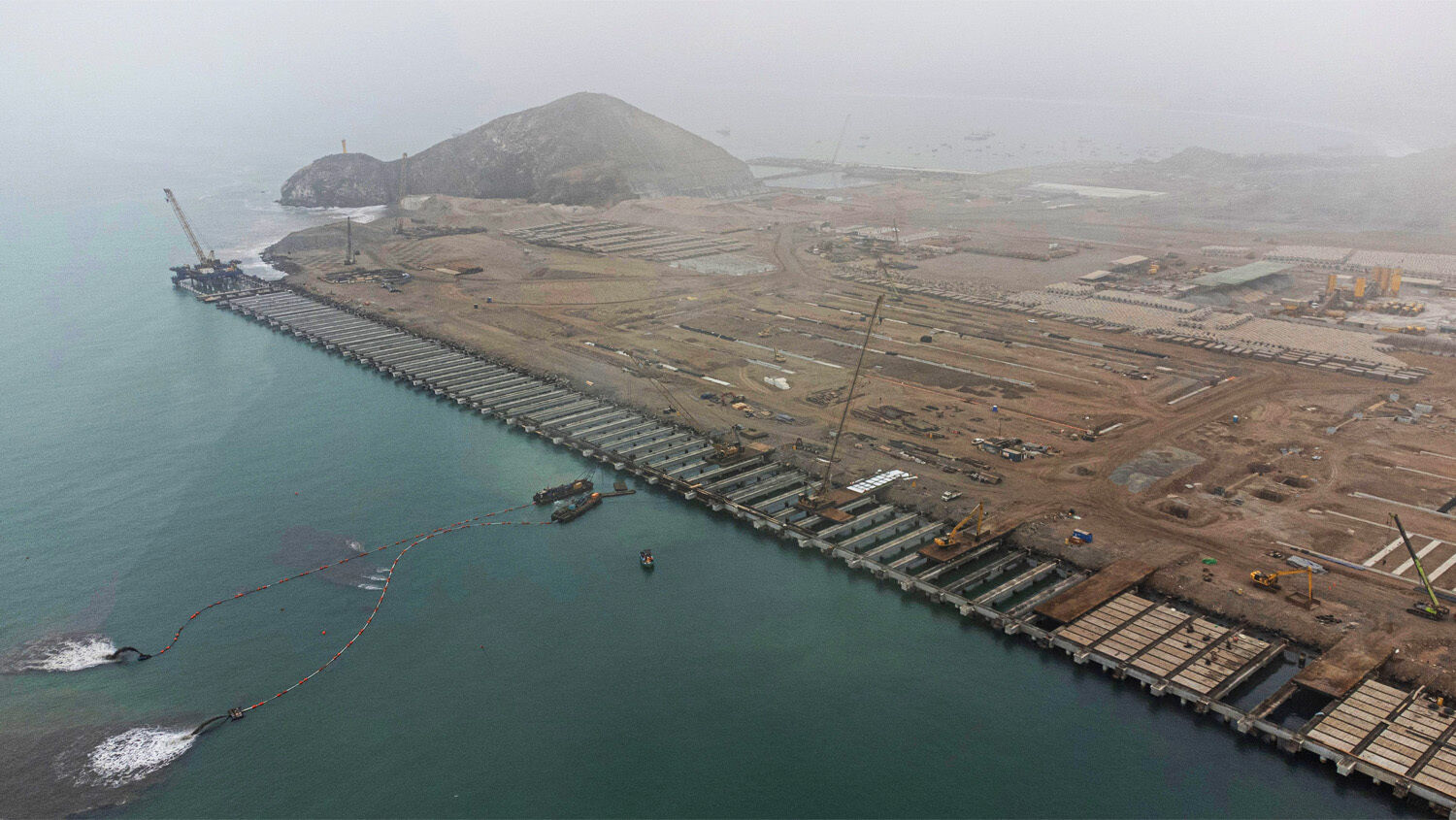
Chinese Megaport Turning Peru Into ‘Gateway From South America to Asia’
“This changes the game,” said former United States State Department official Eric Farnsworth during a June 13 interview about a megaport China is building on the coast of Peru.
The port in Chancay, Peru, some 50 miles north of the nation’s capital, is around 85 percent complete. The state-owned China Ocean Shipping Co., known as cosco, is leading the project and owns a controlling stake in the port. It is expected to open at the end of the year, with an inauguration ceremony led by Chinese General Secretary Xi Jinping himself.
Chancay is a game changer partly because it will be the first port on South America’s Pacific coast deep enough to accommodate the megaships that power the modern global economy. The $3.6 billion project will reduce shipping times from Peru to Asia from 35 days to closer to 22 days. And it is not just Peru that this links more tightly to China, but also Brazil, Colombia, Ecuador and Chile, which will use rail and road to connect to the port. Mario de las Casas, institutional affairs manager of cosco, said this means Chancay will become “the gateway from South America to Asia.”
Such a gateway means larger quantities of Latin American perishables will feed the world’s largest food-importing nation. And flowing in the other direction, Latin America will buy significantly greater volumes of Chinese manufactured goods. Overall bilateral China-Latin America trade is expected to swell to unprecedented volumes.
But Farnsworth argues that this Chinese port goes beyond just increasing trade. “It really platforms China in a major new way in South America as the gateway to global markets,” he said. “It is not just a commercial issue at that point; it is a strategic issue.”
This argument is sound because China’s control of Chancay will further tighten its grip on Latin American resources and increase China’s influence over America’s neighbor nations. And since China’s laws mandate that its companies take national defense concerns into account, the new port could even clear the way for the establishment of a Chinese military base near U.S. shores.
And this port is just one part of a sweeping Chinese strategy.
For the last decade and a half, China has been brokering deals like this one with more than 100 nations across Latin America, Europe, Africa, the Middle East and Asia. The agreements empower China to build railways, highways, bridges, ports, factories, metros, mines, electric plants and other infrastructure, and are all part of Chairman Xi’s Belt and Road Initiative. This is his strategy to boost Chinese power over numerous nations and strategic areas, and to thereby make more than 100 Belt and Road member nations more dependent on China. The Chancay Port will further advance these goals.
This takes on great significance in light of prophecies in Isaiah 23 and Ezekiel 27, which talk about a “mart of nations,” or an economic alliance, that will form between China and many Asian and European nations. When those passages are placed alongside Deuteronomy 28:52, it is clear that the main reason this economic alliance will come together is to besiege the United States and block it out of world trade.
Trumpet editor in chief Gerald Flurry has written extensively about these passages over the years. In his booklet Isaiah’s End-Time Vision, he says this is basically how World War iii will begin. He draws particular attention to Latin America, emphasizing how European countries have already built a great deal of influence over many Latin American nations, and explains that once China enters into this “mart of nations” alliance with Europe, then all the influence that China is now building in Latin America will translate into even greater European control over the region.
China’s new port in Chancay is only one aspect of a globe-girdling trend. It signals some dark times on the horizon, but there is also a great deal of hope tied into these developments. To understand the full picture, read our Trends article “Why the Trumpet Watches the Development of a Massive Anti-American Trade Bloc.”
